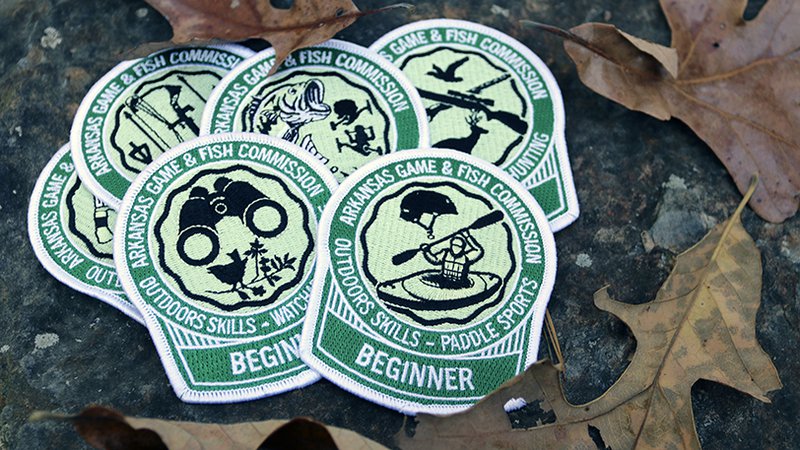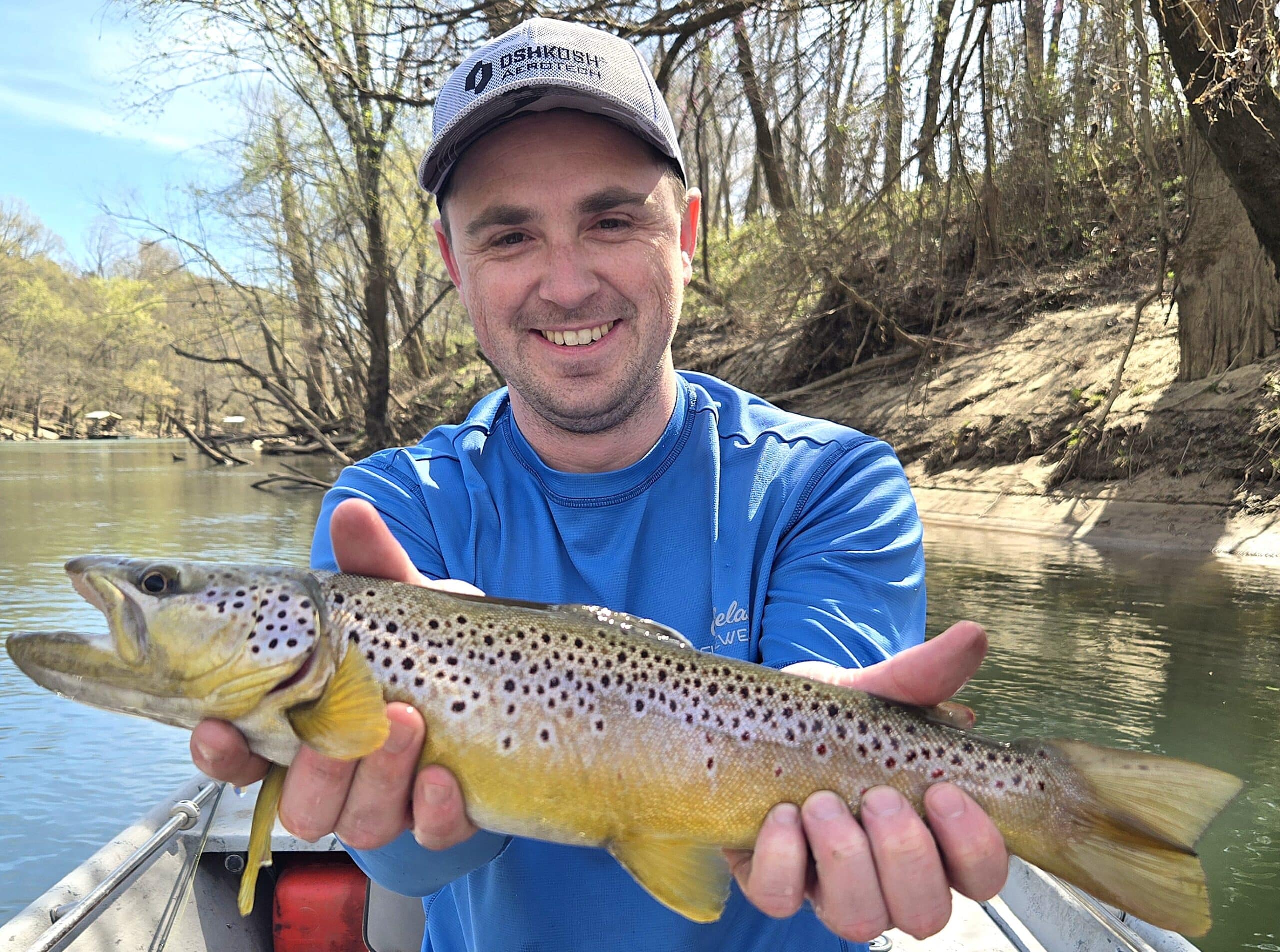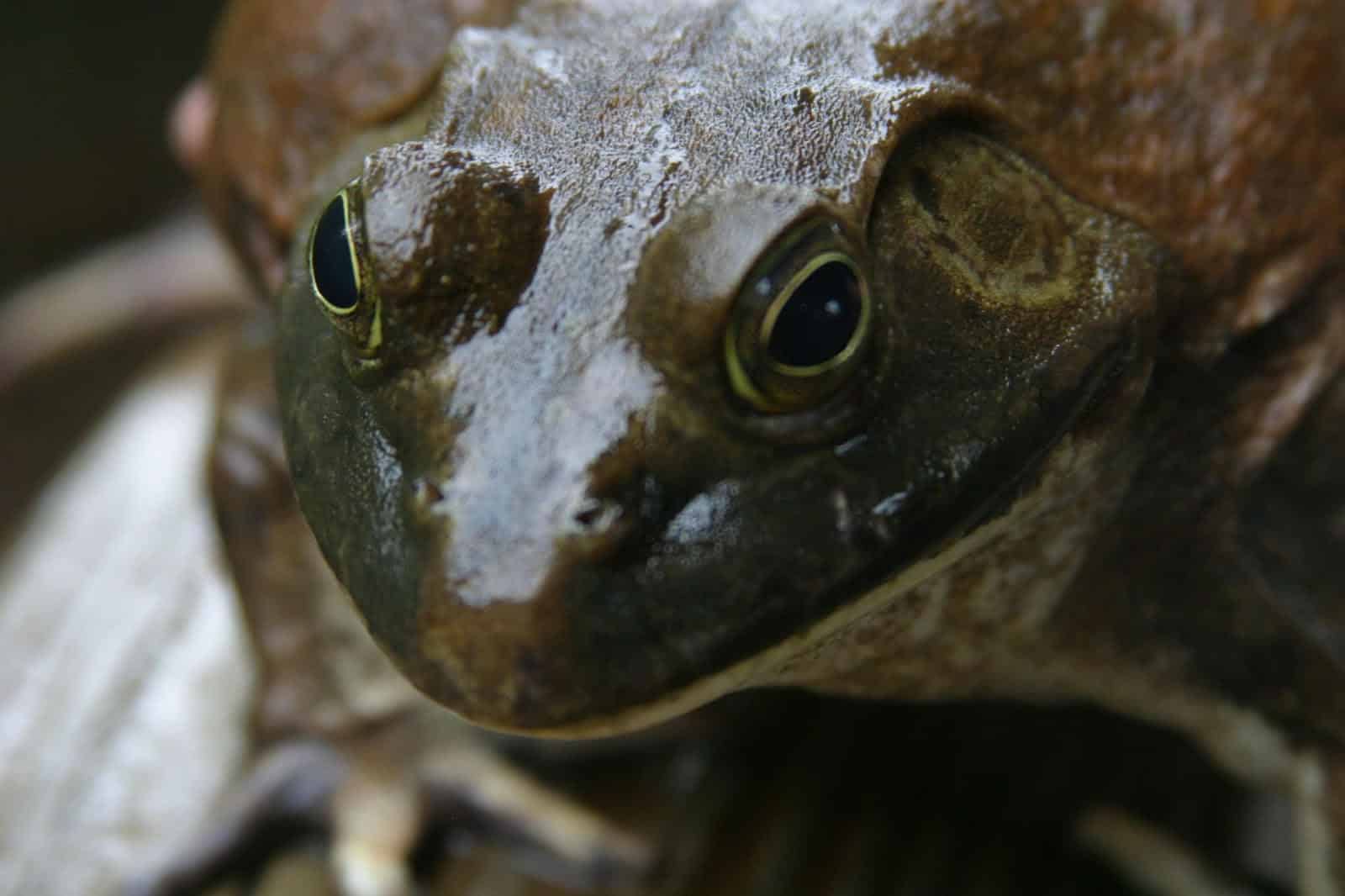AGFC unveils new outdoors skills program
ON 01-09-2019

Jan. 9, 2019
Randy Zellers
Assistant Chief of Communications
LITTLE ROCK — Outdoors enthusiasts are known to wear their hearts on their sleeves, now they may have a little extra badge of honor to display their passion. The Arkansas Game and Fish Commission’s new Outdoors Skills Program rewards beginning and veteran hunters and anglers with a special patch for their accomplishments in the outdoors.
The outline of the program is simple. When a person attends one of many workshops the AGFC’s Education Division provides, they become eligible to receive an attractive patch to place on their favorite piece of outdoors clothing. The initial patch labels them a beginner in one of 10 outdoor disciplines. From there, participants can complete different tasks for each discipline to “level up” through intermediate, advanced and expert rankings, each with its own rocker to accompany the initial patch.
Patch categories include archery, conservation leadership, fishing, game-calling, hunting, paddle sports, rifle marksmanship, shotgun marksmanship, trapping and watchable wildlife. Some of the categories crossover and lead into others, while some are independent of the rest.
Eric Maynard, AGFC assistant chief of education, says the new program will be available through all AGFC education centers, nature centers and regional educators this year.
“I’ve been thinking about doing this for a few years,” Maynard said. “Obviously there are scouting programs that have patches, but I really modeled this after the National Rifle Association’s Winchester Marksmanship Program, which has been around for 50 years and focuses on shooting sports.”
Maynard says the AGFC devotes a lot of time and effort into reaching out to introduce the outdoors to youths and newcomers, and the numbers are impressive. According to the Arkansas Department of Education, Arkansas had 478,318 students enrolled in public schools from Kindergarten through high school in 2018. During Fiscal Year 2018, the AGFC’s Education Division held 1,900 programs at nature centers and another 900 programs within the schools to reach out to just under 199,000 participants.
“Some of those participants may be repeats from multiple trips,” Maynard said. “But this only counts the formal workshops and not the thousands of spur-of-the-moment visits we get from individuals or small groups.”
Although the AGFC does an excellent job of giving people a taste of the outdoors through fishing derbies, workshops and classroom visits to schools, Maynard says there’s a need to bridge the gap between the first exposure and creating a passion for the outdoors.
“Our traditional programs are great at getting people’s attention and introducing them to the outdoors,” Maynard said. “But we can only give you the basic tools and knowledge, then cross our fingers and hope you take what you’ve learned and apply it. The new program gives some incentive to get to the next step.”
The concept falls right in line with the many efforts by educators across the nation to recruit new hunters and anglers. According to Matt Dunfee, director of special programs for the Wildlife Management Institute, repeated exposures to a pursuit are essential in having a prospective outdoors enthusiast move from their first trial to adoption of the pursuit without further support. If a person decides they want to move forward with an outdoors pursuit, they likely will need to learn an entirely new set of skills and gather the needed equipment to do so. Otherwise they may see the workshop as a nice one-time adventure and never really adopt the outdoors pursuit on their own.
“The requirements to get your next patch aren’t just a goal, but are a blueprint in what you need to learn more about that particular outdoor activity, Maynard said.
The Outdoors Skills Program also gives parents and other mentors an opportunity to foster a love of the outdoors and spend time with budding conservationists, even if they are new to the pursuit themselves.
“I used the NRA’s program when I was working with my own son on shooting sports to introduce him and keep his enthusiasm high,” Maynard said. ““We always see fathers, mothers and other relatives bring young hunters to our workshops and use it as a time to learn together. Even some veteran hunters will quietly sit in the back of the room and take a few mental notes. It’s a great way to have a shared experience everyone will look back at and smile.”
Many steps to attain a new level require participants to go on their own or with friends and come back with photos or notes from the trip.
“We can’t be there every time you go out fishing or hunting, but we do want to share the experience with you and foster your journey any way we can,” Maynard said. “You can come to one of our nature centers or talk to one of our educators throughout the state to show off your success, and they’ll be able to get you the rocker to put on your patch celebrating you meeting that goal.”
Maynard says the large volume of people going through all of the AGFC’s programs will prevent staff from just handing out the patches at every workshop offered. Instead, participants of most courses will get a voucher to take to a nature center and claim their patch. There they can learn more about how to progress and all of the workshops and classes offered through the center and AGFC educators.
Visit www.agfc.com/outdoorsskills or visit your local nature center for more information.
Recent News

Arkansas Wildlife Weekly Fishing Report
Apr. 10, 2025
Subscribe to Our Weekly Newsletter E-mails
Don’t miss another issue. Sign up now to receive the AGFC Wildlife Weekly Newsletter in your mailbox every Wednesday afternoon (Waterfowl Reports are published weekly during waterfowl season and periodically outside the season). Fishing Reports arrive on Thursdays. Fill in the following fields and hit submit. Thanks, and welcome!

